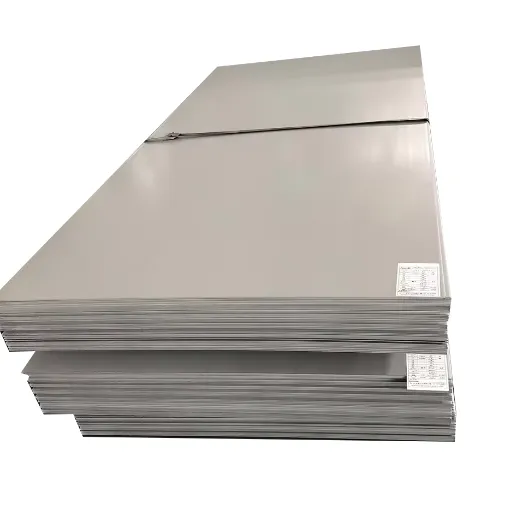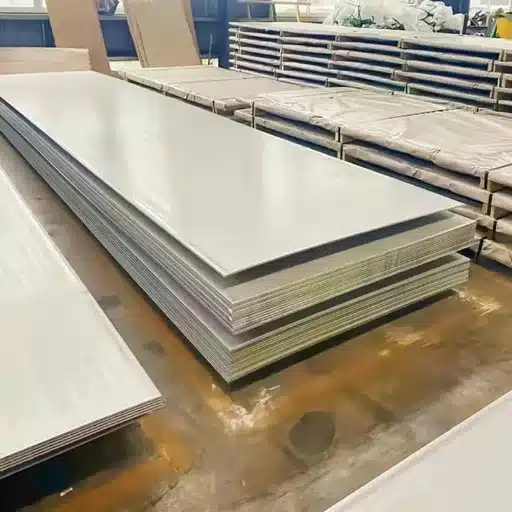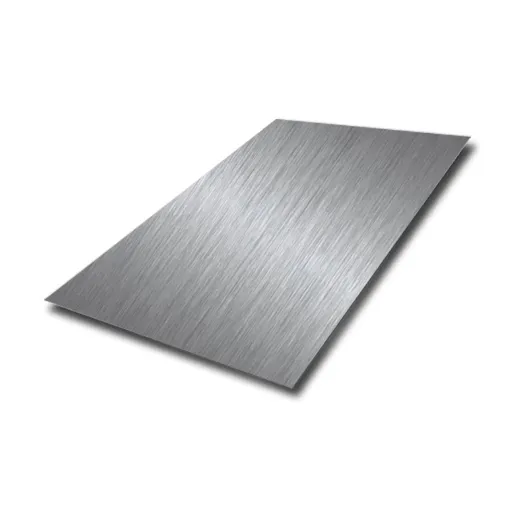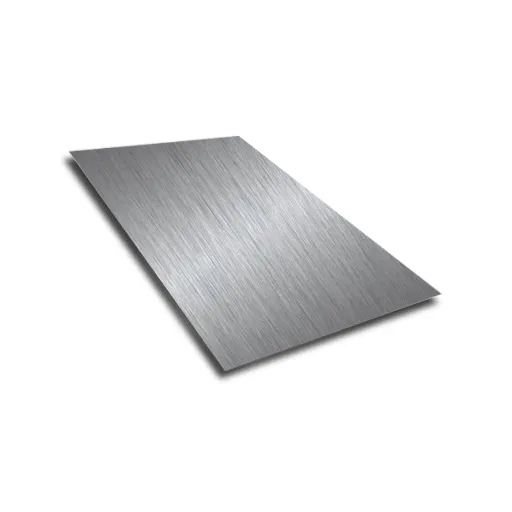As important as magnets are in advancements in technology and daily use, not all elements or materials behave or are affected by the force in the same manner. Among the various realms in which it is applied, titanium, in particular, is a subject of deep research regarding its relationship with magnetism. Does titanium stick to a magnet? The question is not as ambiguous as it may look. This paper looks at the principles of magnetism, addresses the issue of whether titanium falls under a magnetic material and explains why the behavior of this light yet strong material can sometimes be inexplicable when it comes to magnetic fields. Suffice to say, reading further, you will come to comprehend better the titanium and its magnetic nature.
Titanium: An Overview
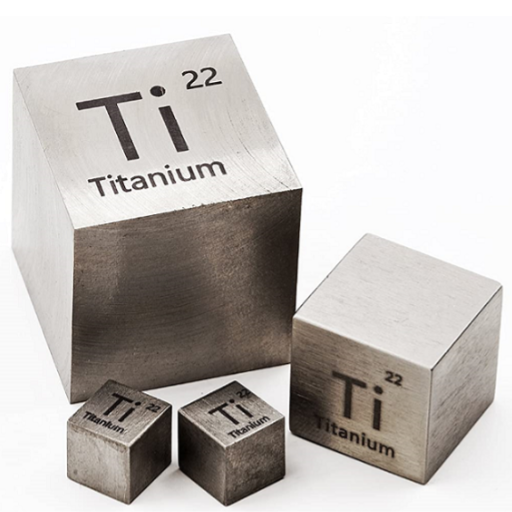
On a more fundamental level, titanium is known to be paramagnetic, a property characterized by its ability to be magnetized only when placed within a magnetic field at extremely low temperatures. Titanium is quite different from ferromagnetic materials like iron, cobalt and nickel, in that it does not exhibit strong or permanent magnetism. In fact, the interaction of titanium with magnetic fields is so weak that it is safe for many purposes to say that the metal is not magnetic at all. This quality is alluded to the electronic setup and the absence of unpaired electrons, which are responsible for the exotic states of many magnetic materials. Naturally, titanium will not be attracted to a magnet under everyday conditions, and hence it would be the preferred material for applications that require low magnetic interference.
Characteristics of Titanium
Lightweight and High Strength-to-Weight Ratio
- It’s important to note that titanium is characterized by a density of ~4.5 g/cm³, which accounts for roughly 56% of that of steel’s specific gravity.
- Even with the relatively low density, the metal possesses significant tensile strength – from 240 to over 100 MPa for commercial purity and certain alloy types, respectively.
Corrosion Resistance
- Titanium is also recognized for its anti-rust properties. This self-protection behavior of the metal originates due to the specific oxide layer, TiO2, forming on its surface as a result of exposure to the natural conditions or alternatively any liquid media.
- Given its resistance to seawater, chlorine, as well as most acids, titanium is widely used in the marine industry and other related chemical processes.
Biocompatibility
- Aside from being safe, titanium materials is compatible with physiological fluids. That is why it is used as a preferred material for the fabrication of surgically implanted devices,home medical equipment, and in dentistry in the form of fixtures.
- Claim titanium in emergency medicine, for example, is a luxury, but its usage has been extended to other medical applications due to its biocompatible and osseointegrative property.
Thermal Stability
- As a structural material, titanium exhibits good characteristics at temperatures other than room temperature.
- The temperatures can reach up to 600°C (Approximately 1112°F), but titanium will still retain its mechanical stability and strength, thereby being ideal for use in aircraft construction until such time as the mechanical systems need to be controlled at ambient temperatures and high temperatures.
Low Thermal and Electrical Conductivity
- When it comes to thermal conductivity, with a value of about 22 W/m·K and resistivity of 420 nΩ·m, titanium falls at the ‘bad’ end of the conductivity spectrum when compared to other metals like aluminum or copper.
- Importantly, this occurs in specialized applications, as they are moderated due to the nature of this property, which involves both heat retention and electrical insulating qualities.
Non-Magnetic Properties
It lacks magnetism, which means that titanium does not interfere with magnetic forces, hence it is conducive for use with electronic equipment, medical imaging systems (e.g., MRI machines), and other sterile surroundings.
Industrial Importance of Titanium
Because of the appealing strength-to-weight ratio, titanium has many commercial uses, enhances corrosion resistance, and allows the body or an organ system to recognize it. In the aeronautical field, titanium-based mixtures are heavily utilized for supporting the geometrical design of planes, their engine elements, and accompanying equipment. All of this is achievable due to the fact that, on one hand, it resists excessive temperatures. On the other hand, it provides lightweight capabilities that are quite crucial to fuel efficiency. After all, titanium is highly suitable for use in chemical processing industries, where it is regularly employed, for instance, in heat exchangers, reactors, or piping systems in harsh chemical and high-pressure environments.
The automobile business is another sector that has readily adopted titanium when it comes to the manufacture of hot performance parts such as exhaust manifolds, engine valves and connecting rods. Thus, applications should always be easier to make with the use of the Silverside metal, which also, in turn, when hard, should have the same level of performance. Titanium, in addition, joins the green energy bandwagon with applications in wind turbine manufacturing, among other sectors, enhancing the mechanical strength and wear resistance, as well as corrosion resistance, of products made with titanium materials, which in turn increases their operational lifetime.
Magnetic Properties of Titanium
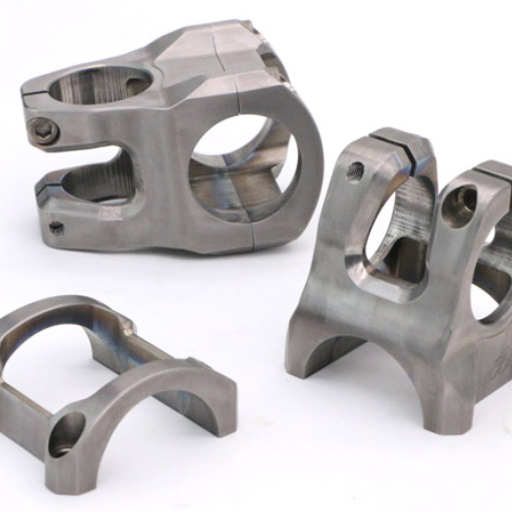
Titanium is known to be a weakly ferromagnetic material by nature; mostly, it is not practically designed to contain magnetized atoms. This is a result of the electronic distribution inside titanium atoms because it leaves some electrons unpaired which then virtually exhibit no magnetic effects. Such an interaction would make titanium unable to raise a magnetic field and hence, it is ‘non-magnetic’ in that the term is used in practice. This also makes titanium ideal for places that require minimal magnetic effects, e.g., health care facilities involving MRI machines and delicate scientific and technological apparatus.
Paramagnetic vs. Ferromagnetic Materials
| Parameter | Paramagnetic Materials | Ferromagnetic Materials |
|---|---|---|
| Magnetic Susceptibility | Small and positive | Large and positive |
| Magnetic Behavior | Weak attraction to magnetic fields | Strong attraction and permanent magnetization |
| Electron Configuration | Unpaired electrons | Unpaired electrons aligned in domains |
| Magnetic Alignment | Spins align weakly with external field | Spins align strongly and maintain alignment |
| Retentivity | No residual magnetism when the field is removed | High residual magnetism remains |
| Temperature Dependence | Affected at very low temperatures | Loses ferromagnetism above Curie temperature |
| Example Materials | Aluminum, Platinum, Titanium | Iron, Nickel, Cobalt |
| Practical Applications | MRI machines, sensors, electronics | Motors, transformers, magnetic storage |
Magnetic Behavior of Titanium
In magnetic terms, titanium qualifies as a paramagnetic material, having minimal yet observable magnetism in the presence of an external magnetic field. This is because the magnetic moments of its atoms tend to orient themselves only slightly or weakly in the direction of the magnetic field. The fact that titanium returns its magnetic dipoles to a more random orientation with ease after a magnetic field is removed again indicates that this transition metal is inertly magnetic.
The behavior of titanium can be characterized as paramagnetic, indicating that its magnetic susceptibility drastically decreases as the temperature increases, which contradicts Curie’s law. However, at very low temperatures, the magnetic properties of titanium can be slightly enhanced as the amount of lost thermal energy cooling also decreases. What other instances of improvement to these weak natural magnetic properties concern titanium is how it holds the perfect collection of qualities necessary in combination with the powerful general attributes of high strength-to-weight ratio, corrosion resistance, intelligence, and biological acceptability to find a really indispensable application among the factories after assembly of nonmagnetic or hardly magnetic assemblies necessary for various branches of industry: aircraft, medical prostheses, specialized electronics, and the like.
Why a Magnet Does Not Stick to Titanium
To put it more accurately, Titanium, given its electronic structure and magnetic susceptibility, cannot interact with magnets as gallium can do. Titanium unlike many metals a transition element has a closed shell configuration with all the orbitals having electrons in pairs bound within atomic-orbital. Each of these pairs gives rise to a phenomenon that occurs when the material creates an opposing field in the presence of an external field. It turns out that this effect is by far much weaker compared to the case of a ferromagnetic material with electrons that exist in two places, as is the case with titanium.
It should be noted that the formation of long-range ordered magnetic moments characteristic of ferro- or anti-ferromagnets is not supported by the actual crystal lattice of titanium. This is even the case when a magnetic field acts outside of titanium, as the alignment of magnetic moments remains minimal. It is worth noting that titanium and its alloys are widely utilized in various industrial applications due to their exceptional physical and mechanical properties. So, other types of non-conventional methods of magnetic field detection require other shielding agents or materials which include titanium in terms of the underlying lattices and expanding to the horizontal plane.
Understanding Magnetism

The creation of a magnetic field is through the motion of charged particles, which are often electrons in atoms, commonly known as antiferromagnetism. One can be created when the electrons are in motion to the electron’s orbital angular momentum. This is when the tiny magnetic field motion generated can be lined up in some materials and view magnetic properties on a large scale. The level of orientation achieved determines whether the material is diamagnetic, paramagnetic, or ferromagnetic. Ferromagnetic materials such as iron, are magnetic because of the parallel alignment of magnetic moments within them. As a contrast to ferromagnetic material, paramagnetic ones are feeble bearers of magnetism due to unnecessary electrons that align in the magnetic field. Diamagnetic materials, however, are against the polarity of the external magnetic field and repel it. These learnings are necessary and unavoidable in the present and futuristic fields of technology, for instance, devices related to electronics and the health sector
What is Magnetism?
Magnetic forces are caused by the movement of electric charges that results in magnetism. Magnetic fields create push and pull to other charged particles and other magnetic materials that are around them. The behavior of magnetism is essentially how certain particles interact due to their quantum mechanical properties, specifically the spin and the orbital motion of the electron. The ability of the material to be magnetized is dependent on the systems of electron spins and their interconnectivity, which dominates the superparamagnetic, paramagnetic, and diamagnetic regions.
The theoretical aspect has extended to the understanding of simple subjects, such as magnetism, and it has encompassed complex areas, including spintronics —a quantum mechanical phenomenon of major importance. Devoted studies also include a review of more puzzling topics, such as the magnetic characteristics of recently emerging engineering materials, superconductors, and rare-earth magnets. Examples such as transformers, electric motors, magnetic resonance capabilities, and data storage elements cannot be complete without a discussion of the role played by magnetism in modern sciences.
Types of Magnetic Materials
| Type of Magnetic Material | Key Characteristics | Examples |
|---|---|---|
| Ferromagnetic | Strong magnetism, retains magnetism after removal | Iron, Nickel, Cobalt |
| Paramagnetic | Weak magnetism, aligns with magnetic field | Aluminum, Magnesium |
| Diamagnetic | Repels magnetic field slightly | Copper, Gold, Bismuth |
| Ferrimagnetic | Unequal opposite magnetic moments | Magnetite, Ferrites |
| Antiferromagnetic | Opposite magnetic moments cancel out | Manganese oxide |
| Superparamagnetic | Similar to ferro, without permanent magnetization | Nanoparticles, Iron oxide |
| Spin Glass | Randomly frozen magnetic spin orientation | Alloys of Iron and Copper |
The Role of Magnetic Domains
Magnetic domains are small regions within a particular material with atomic moments aligned in a certain direction. This arises due to exchange interactions which are designed to minimize the energy in the system. The direction of these aligned domains, however, can change from place to place, and the transition lines in between them are referred to as domain walls. It is essential to note the significant role of domain walls in determining the material’s macroscopic magnetic properties.
Among the many impacts external magnetic fields have concerning magnetic domains, the most significant is inducing their growth or reorientation so that they can align with the field. This process, which is often accompanied by the displacement of domain walls or the rotation of the magnetization, not only causes the so-called magnetization and demagnetization, but is also responsible for numerous other processes. For example, in the case of ferromagnetic materials, it is possible to cause an increase in the magnetic field with harm to the properly aligned domains relative to the inexcusably oriented domains and in doing so, achieve a net effect on the magnetization.
Applications of Titanium in Different Industries
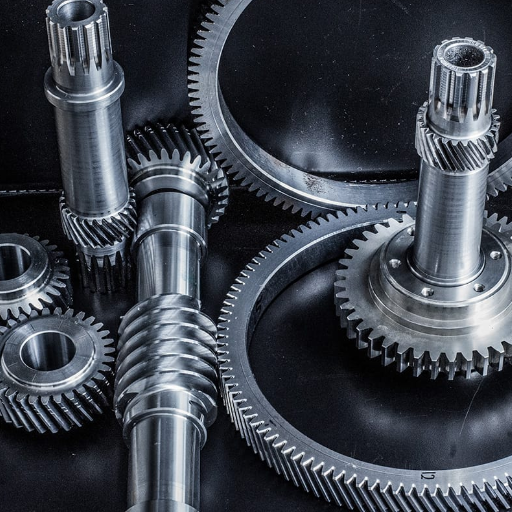
The material named titanium is readily applied in various production lines of several sectors, due to its unimaginable ratio of strength to weight, stability against corrosion, and interaction with organisms.
- Aerospace Industry: This metal is of key importance, as it is involved in the short intervals or withstanding high temperatures and low temperatures, including air frame, wing root, and other components.
- Medical Field: Its capability being friendly to human eco-environment plus being resistant to body fluids encourages the use of titanium in making artificial implants such as prostheses and surgical instruments among others.
- Automotive Sector: In high-power vehicles, titanium metal is used, which provides efficiency in fuel consumption and improves the long service life of the parts, such as engine and exhaust components.
- Chemical Processing: With the ability of titanium to withstand corrosion and chemicals, it is used in the manufacture of heat exchangers, reactors, and system pipes.
- Energy Sector: This metal is put to use in power plants where it is used in desalination and green energy systems as well due to its ability to survive unfavorable conditions.
These particular elements, as well as their uses, provide a lot of insight into the significance of titanium in enhancing technology and industrial efficiency in our age.
Titanium in Aerospace Engineering
Titanium is widely utilized when it comes to aerospace because of how it is rather strong relative to its weight, does not rust, and endures most temperature ranges. In the case of the titanium metal, it is commonly used in making parts of the aviation machine, as well as space machines, and in the military. It is also worth noting that the titanium is employed first and foremost for the construction of such critical devices as the airframe, engine, and fastening systems. A variety of titanium-based designs that are reinforced by other materials, including aluminium and vanadium, significantly decrease weight while concurrently improving functionality. Most importantly, this is the joint titanium and titanium-aluminum, which are used in most large engineering systems, such as the Boeing 787 aircraft. This stands in contrast to steel construction, in which shut aircraft compartments need to be heated each time that the sun shines in regardless of the to outside. Such uses lead to the inevitable conclusion that titanium plays a key role in making leaps in aerospace technology.
Medical Uses of Titanium
Titanium has transcended the mere status of just another alloy to a material that is indispensable in the spheres of medicine, more so in the design and development of medical implants and artificial body parts. The ability of titanium implants to resist the processes of corrosion guarantees that it can be used for long periods without being rejected by the human body. Exceptional strength-to-weight ratio of titanium allows designing of the body replacement parts that can be both strong and lightweight; it could be as simple as a hip replacement or as complex as a tooth replacement. Moreover, its resistance properties ensure that it can bear usage even in body fluids. With recent innovations in materials and manufacturing techniques, it has become feasible to modify the surface of titanium implants using porous coatings and/or other technologies to enhance bone tissue regeneration or… The use of these materials in medical procedures, particularly in orthopedics and dentistry, is increasingly widespread globally; hence, the use of titanium in present-day and future medical practice is quite secure, both in terms of results and the longevity of operations.
Titanium in Manufacturing and Construction
Properties of titanium, like its strength-to-weight ratio, ability to resist corrosion for extended periods of time, and high endurance, make it a fundamental input in the manufacturing process of various products. Titanium is often used in the manufacture of structural components in the aviation industry; these components are also of great importance to the automobile and petrochemical industries, as they require materials that can withstand high temperatures and corrosive environments.
Architecture and building construction have discovered ways of using titanium mainly as facade panels, roofing systems, and interior support beams due to great wear resistance and easy cleaning features. For example, a titanium structure exhibiting all the attractive features is a beach or near-marine structure that can last for several decades. Furthermore, the development of new machining technologies and titanium alloys has led to improvements in the weldability and plasticity of this shaft, creating numerous prospects in the production and architectural industries.
Common Misconceptions About Titanium and Magnets

A widespread misconception surrounds the magnetic properties of titanium, which makes it a ferromagnetic material, similar to iron and nickel. In actuality, titanium is a paramagnetic material, which means that it is attracted to a magnetic field but only slightly. This pull is invisible to the naked eye, and most people see titanium as a magnetic substance, whereas it is not. Titanium can be defined magnetically, but its engineering usage is far from magnetism.
Is Titanium a Non-Magnetic Metal?
Most lightweight materials primarily depend on titanium for its unique suitability in terms of corrosion resistance, durability, and biocompatibility. Moreover, in such special applications, its weak magnetic properties are at a premium. Here is an excellent example of these scenarios: in the manufacture of medical equipment, including surgical instruments and biomedical implants, titanium is often employed because it permits the production of products without disturbance due to magnetic interferences. Medical equipment manufacturing using titanium material is preferred due to its non-interference with medical imaging equipment, such as MRI, which allows for the acquisition of accurate images without any form of distortion.
The various compositions of titanium also play significant roles in elevating its applications within the aerospace and electronics industries. In such fields, the materials’ paramagnetism helps in the mitigation of any electromagnetic-related issues and thus ensures the effectiveness of such materials within the systems where they are used without affecting the devices that they are used alongside. Titanium and its capacity for hosting weak magnetic properties alongside superior mechanical strengths are apt for high-tech designs within multiple industries engaged in further studies.
Exploring Ferromagnetic Elements
Ferromagnetic characters, however, such as Iron (Fe), Cobalt (Co), and Nickel (Ni), are favored with the goodness of retaining their magnetism after a magnetic field has been imposed and then removed. This can be explained by the imperfections of the structure of these elements, which cause unsaturated electrons to fuse to some of the positions, while others attract from a strong magnet. It is agreed that ‘the orientations of regions (M) should be aligned with ferrimagnetic or ferromagnetic coupling’
Furthermore, each of these materials embodies a particular configuration of properties like high magnetic permeability that permits them to usefully collect and enable the magnetic flux to flow effectively throughout the material and high coercivity, which shows the prevention coefficient against demagnetizing. Another important characteristic of ferromagnetic matter is its Curie temperature, or the limiting temperature above which a ferromagnetic material turns the magnetism off because of the thermal motion disturbing the domain structure. For example, Iron has a Curie temperature of about 770 °C, above which it becomes paramagnetic.
One particularly useful application of ferromagnetic elements that can be attributed to their magnetic and other physical properties is their dedicated use in electric motors, transformers and magnetic storage systems. In engineering and technological advancements, they have been irreplaceable, mainly because they possess the ability to confine the magnetic effects to a specified region.
Reference Sources
-
“Development of a rotary thermomagnetic motor for thermal energy conversion”
- Key Findings: This study explores the use of magnetic fields in energy conversion systems. While not directly about titanium, it discusses the role of magnetic materials in thermal energy applications.
- Read more
-
“Nanofibers Membrane Loaded with Titanium Oxide and Rifampicin as Controlled Drug Delivery System for Wound Dressing Applications”
- Key Findings: This paper investigates titanium oxide nanoparticles in medical applications, including their interaction with magnetic fields during synthesis.
- Read more
Frequently Asked Questions (FAQs)
Q: Does titanium exhibit magnetic properties?
A: It is safe to say that metals classically considered in the order of magnetic properties are landed somewhere between the nonmagnetic types with titanium. Thus, by and large, it does not show appreciable magnetic behavior, in contrast to ferromagnetic substances such as iron and nickel. That being said, the issue is not so black and white for he has evolved with time. Titanium material can exhibit a degree of susceptibility to strong magnetic fields without ever having some absorption of these magnetic properties such that they remain magnetized after being portrayed by an external magnetic field or by the attraction of magnetic items.
Q: Can a magnet stick to titanium?
A: Absolutely no, magnets don’t stick to titanium. This is because titanium is not a magnetic substance and does not possess the characters of magnetism for a method of attracting magnets to the magnetic materials refers to as ferromagnetism. However, even though titanium can show minor magnetic properties with the help of a powerful magnet, it lacks the inherent magnetism ruining the chances of the magnet attracting such a metal. Then, if you place a magnet close to a piece of titanium that gets does not launch inside.
Q: What are the characteristics of titanium in relation to magnetism?
A: In the field of magnetism, titanium has such properties as a paramagnetic or nonmagnetic metal. Paramagnetic metals do not traditionally attract mechanical force, therefore classically titanium shows no magnetic behavior when placed within a magnetic field as the electrons in its structure are paired. A very strong magnetic field can give rise to some gravitational attraction toward titanium because of the structural disposition of some unpaired electrons. According to this, in a strict sense, titanium is nonmagnetic; whereas in another sense, it can become magnetic when subjected to an external field.
Q: Is titanium a ferromagnetic material?
A: Titanium is a non-magnetic metal with paramagnetic properties. Mechanically induced magnetization is a course followed by ferromagnetic substances, and titanium does not show this classical behavior because its electrons occur as pairs. Upon application of a very high external magnetic field, it may show a faint attraction depending on its electron distribution. Hence, it can be said that titanium is strictly non-magnetic in the true sense of the term; however, in an unconventional sense-shirt-word, it can be considered magnetic due to the influence of strong magnetic fields on electron orbits.

